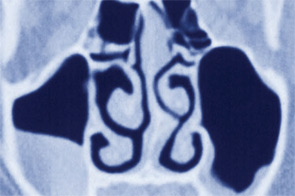The title of this session at the Triological Society’s Combined Sections Meeting held here Feb. 4-7 asked a tough question: Why are otolaryngologists still talking about pediatric tonsillitis, otitis and sinusitis?


The title of this session at the Triological Society’s Combined Sections Meeting held here Feb. 4-7 asked a tough question: Why are otolaryngologists still talking about pediatric tonsillitis, otitis and sinusitis?


For better or worse, medical practices are experiencing change. While many physicians are looking to expand their practice, other physicians are seeking a divorce from their current group.

The genome project sequenced all three billion base pairs of human DNA, revealing the instructions cells need to build all the proteins in the body. But that was just a warm-up, according to Thomas C. Spelsberg, PhD, of the Mayo Clinic in Rochester, Minn.

Diana C. Ponsky, MD, assistant professor of otolaryngology-facial plastic and reconstructive surgery at Case Medical Center in Cleveland, Ohio, went to medical school wanting to be a pediatrician. She happened upon otolaryngology “by accident, by scrubbing into a very fascinating cancer case. I was hooked,” she now recalls.
Does the size of the dehiscence in SSCD correlate with the size of the air-bone gap? Background: Patients with superior semicircular canal dehiscence (SSCD) present with a variety of symptoms […]
What can physicians tell patients about the shelf life of antimicrobial ear drops and when bottles might become contaminated after use in the infected ear canal? Background: Little evidence exists […]
What type of in vivo tissue engineering construct best facilitates tissue regeneration after vocal fold scarring? Background: Vocal fold scarring is the cause of most cases of voice deficiencies after […]
What is the safety and efficacy of the OmniGuide handheld fiber for CO2 laser stapedotomy as compared to the handheld potassium titanyl phosphate (KTP) laser in patients undergoing stapedotomy for […]
Is extracapsular dissection a better option for benign parotid tumors? Background: While a superficial or total parotidectomy is considered the gold standard surgical intervention for benign parotid tumors, the surgery […]